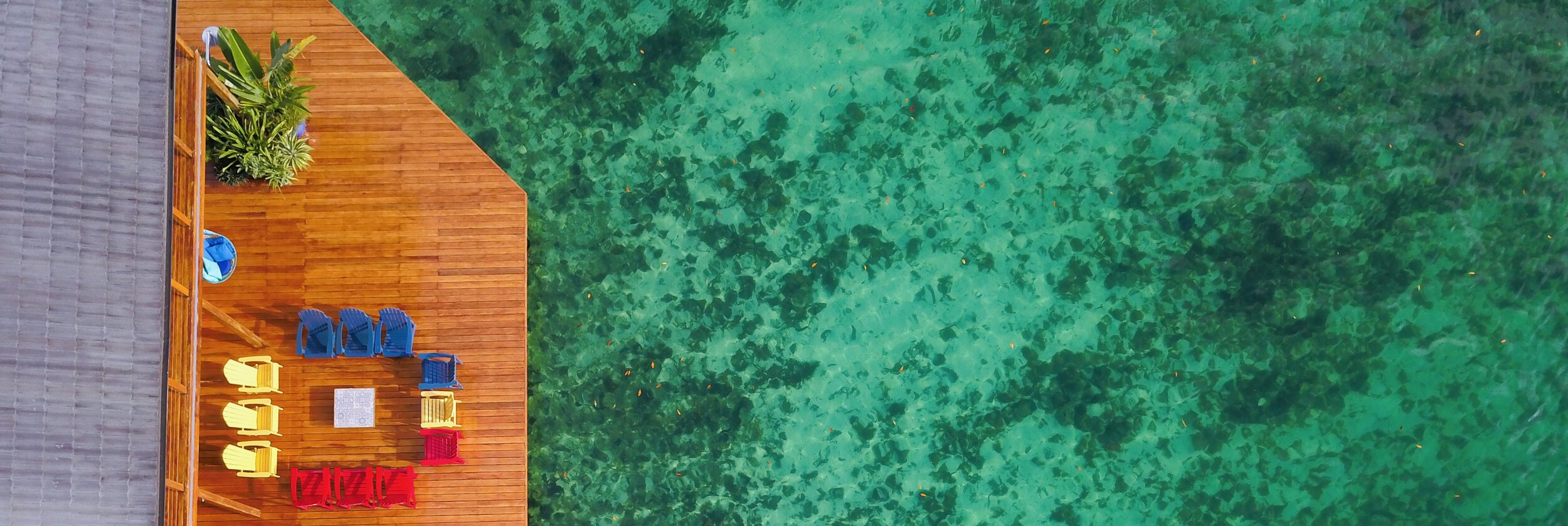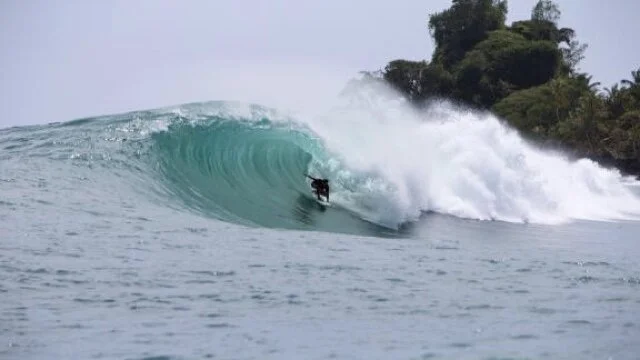
Surfing at Sweet Bocas
Legend has it that Bocas del Toro gets its name from waves crashing upon volcanic rock making a distinct sound similar to the roar of a bull. It comes to no surprise then that nine ocean facing islands in Bocas Del Toro boast some of the best surfing in the Caribbean and the world. The main surf season runs from late November to April with secondary season in June, July and August. The waves are varied to fit all needs; sand beaches of the highest quality to reef points and secret breaks lie around every bend in this archipelago.

Terry simms
Sweet Bocas has partnered with surfing pro Terry Simms to offer special surfing packages. Simms is a pro surfer, elite surf instructor and owner of Terry Simms Surf (TSS). He spent 15 years as a professional surfer (1984-1998), and was an ASP, world-rated, top ten longboarder.
Felippe Dal Piero
Felippe has been travelling for over 20 years to numerous locations in search of the best experiences and waves. He became a coach in the early 2000s in his home country and nowadays holds a level 2 ISA coaching certificate which is affiliated with ASP and the Brazilian Coaching Federation.
Felippe doesn't stop there: He is a certified level 2 Judge by ASP, Royal Lifeguard Society Beach Lifeguard specialized in jet ski rescue and has an emergency first aid instruction certification.
Felippe has taught more than 10,000 people surfing at all levels and abilities. Felippe has spent countless hours in the ocean doing what he loves, developing programs for novice to advanced surfers from all Over the world.
Sweet Bocas is most proud to offer his services for our visitors !

Isla Colon
Isla Colon, the main island, is a seven minute boat ride from Sweet Bocas and boasts five major surf spots which our boat captains can navigate to at the best times to surf.
WAIKIKI
Located just out of town at Playa El Istmito, this is a mellow beach break with sand bottom suitable for beginners and longboarders. It throws both lefts and rights and is great for beginners to just practice standing up and going straight on the whitewater. It does need a larger swell to start showing and will be breaking smaller than everywhere else. If your kids would like to learn how to surf, this is the spot to go to.
TIGER TAIL
One of the first breaks that starts showing. It’s a fun right-hander when small, and once it is head high or overhead, breaks pretty steep and powerful to both the left and right. When small, it’s suitable for beginners but not afterwards. With a sand/reef bottom, if it gets just a bit bigger, it starts closing out as it breaks in a small gap in the reef.
DUMPERS
Outer dumpers provides one of the fastest rides in town. With a steep drop, surfers should get ready for a short tube. This is a wave you really don’t want to fall off, as the reef is exposed right in front of you as well as caves under the hole where the wave breaks. Inner dumpers provides a longer ride with clean steep walls and at the right size can also give you some really nice tubes.
PAUNCH
Surfers looking for some reef experience can try out Paunch which gently breaks mostly to the left but also has a right. With clean faces great for playing around, Paunch can get quite square if the surf is really big, which is only for experienced surfers.
BLUFF
Only for advanced and pro surfers, when conditions are right, Bluff is hollow, fast and very powerful. It breaks almost over the shore and eats boards when it’s hungry.
Caranero Island
Depending on which break you’re going to, it’s just a 10-15 minute boat ride from Sweet Bocas.
CARENERO
The point break that put Bocas del Toro on the surfing map, it has an inner and outer section that when big, can connect to make for very long rides. With 5 distinct peaks this break can hold a lot of surfers. It starts working at 4 feet and can hold swells of up to 12 or a bit more. With the right angle, expect hollow and powerful tubes. Plenty of current. (Only for intermediate – advanced surfers.)
OLD BANK
An A-frame that breaks in the middle of a channel, Old Bank is a fun wave for everyone. Even though it’s a reef break, the water is deep enough for it not to be a hazard so it’s great for beginners.
BLACK ROCK
A fun right suitable for beginners, that also breaks in the middle of the channel with a sandy reef bottom. On bigger days it can be more powerful.
Isla Bastimentos
Isla Bastimentos has several nice breaks and rarely any crowds.
WIZARD beach / PLAYA PRIMERA
The uncrowded beach break is great for beginners when small, and can offer pretty good conditions when it gets bigger before it starts closing out. Wizard beach usually works when everything else is too small.
RED FROG BEACH / PLAYA SEGUNDAS
A nice break for beginners who would like to try out waves a little bit bigger before they take that extra step. This is a great location to learn how to surf, and relax on the beach.
PLAYA LARGA / LONG BEACH
Although more difficult to access it has less crowds than Carenero and several breaks that offer truly world class waves. When it’s on, challenging drops and hollow tubes are in order.
SILVERBACKS
Seen in the image above, Silverback is an open ocean wave on the west tip of Bastimentos. It starts showing at about 10 feet when the swell in the open water channel suddenly hits a sharp ledge that drains the reef and produces Bocas del Toro’s most powerful and sickest waves. Experts and pro surfers only! Get in early and go to the right as it’s easier to get out before it kills you.
kusapin
The breaks mentioned above are the ones which are accessible to all tourists. They can be found anywhere online, with a bit of research. The simple rule in Bocas del Toro is- the easier/cheaper it is to get to, the more crowded it will be.
At Sweet Bocas, however, there are no limits and no wave is too far away. This opens up some other spots where you will practically be the only one in the water. One of these waves is Kusapin.
At a remote indigenous village called Kusapin, located on a peninsula on the far side of the Bocas del Toro Archipelago, there is a magical wave. It is a very heavy beach break, which already works with a little bit of swell.
MORE ABOUT BOCAS DEL TORO
Bocas del Toro surf has been compared to Hawaii’s north shore (on a smaller scale) and certain places in Indonesia. The way the bottom drops off the coast is one of the reasons why the waves break with so much power in Bocas del Toro. Even though Bocas del Toro only receives short period swells (mostly under 11 seconds), the dramatic drops in the continental shaft create hollow, barrelling waves. Add to that some reef, a little sand or a certain angle to the coast line, consistent seasonal swell seasons, and you’ve got yourself some serious tropical world class surf.
The winter season swells (November through April) are produced by the combination of a) the Intertropical Convergence Zone or ITCZ where winds originating in the northern and southern hemispheres come together, b) the dry winds of the northern coast of Colombia and certain Caribbean islands which are practically deserts, and c) the Caribbean high pressure systems that form every winter in the mid Atlantic, providing significant push and pressure gradient differences.
The summer season’s swell is produced by the early hurricane season coming off Africa (Bocas del Toro is not within the Hurricane zone). Just like during the winter, the swell glides over the Atlantic and accelerates thanks to the high-pressure systems of the Caribbean, and then hits several dry and windy islands in the Caribbean and northern coast of South America, producing the same type of NE swell as in the winter.
The result of these three combined factors is a massive acceleration of low pressure pushing constant north eastern swell into Bocas’ wave window, which does not stop for weeks or even months at a time. Another swell contributor which brings a more northerly swell comes from the low-pressure systems that drive swell down from the Gulf of Mexico into other spots of the Archipelago of Bocas del Toro.
Swell Consistency and Wind Overview






